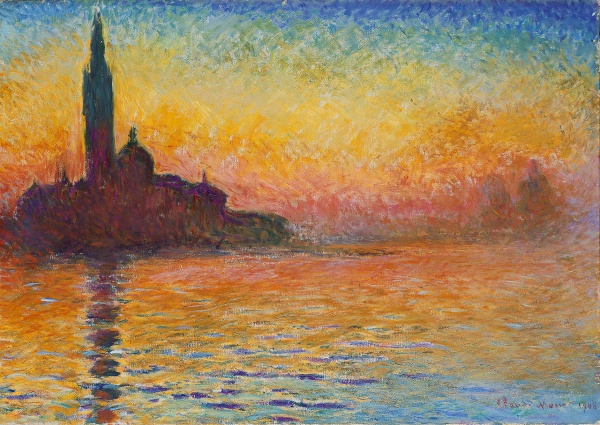Facts About San Giorgio Maggiore at Dusk
Claude Monet's painting "Saint-Georges majeur au crépuscule" is a remarkable example of Impressionist art, capturing the tranquil beauty of the San Giorgio Maggiore monastery-island in Venice. Monet created multiple renditions of this scene during his sole visit to Venice in 1908. Today, one of these versions can be found at the National Museum Cardiff in Wales, and another at the Bridgestone Museum of Art in Tokyo.
The painting, rendered in oil on canvas and measuring approximately two by three feet, features the iconic Church of San Giorgio Maggiore with its bell tower. In the background, recognizable landmarks such as Santa Maria della Salute and the Grand Canal are also visible. Monet was captivated by the distinctive Venetian sunsets and painted the church under six different lighting conditions to encapsulate the essence of these enchanting moments.
During his stay in Venice, Monet's artistic process evolved, though he completed most of his Venice series back in France, particularly in Giverny. Following a successful exhibition at the Bernheim-Jeune gallery in Paris in 1912, these paintings were dispersed. The painting gained widespread attention after being featured in the 1999 film "The Thomas Crown Affair" although it was erroneously associated with the Metropolitan Museum of Art.
Monet's depiction of San Giorgio Maggiore at dusk is a masterful representation of light and color, creating a mesmerizing and atmospheric scene that vividly brings the Venetian landscape to life.

 Ireland
Ireland